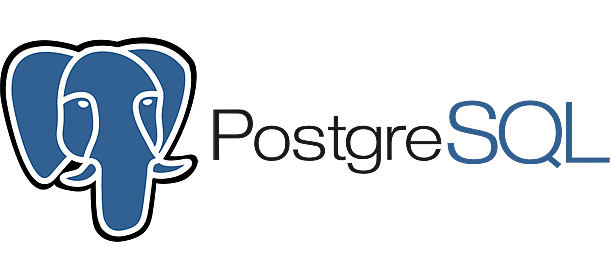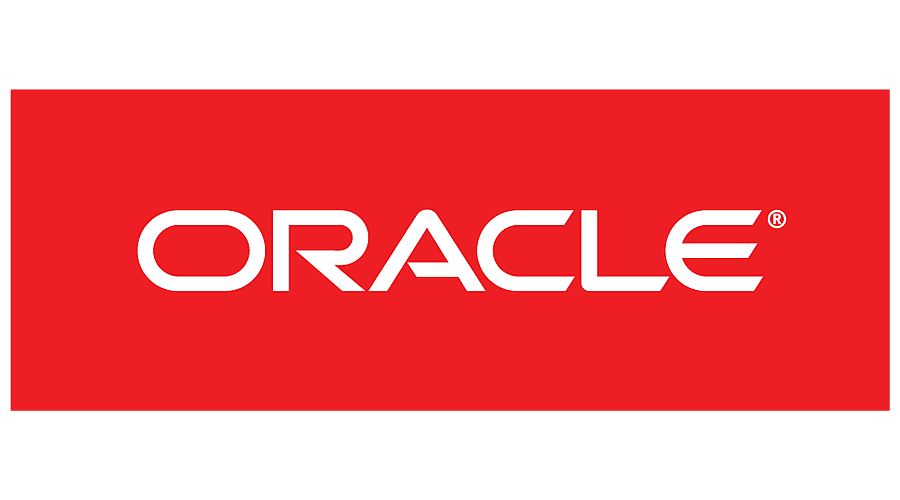Introduction
Welcome to the exciting world of web development! Whether you’re a beginner or have some experience, this guide will provide you with a roadmap to kickstart your journey and help you choose the right technologies based on market demand. So, let’s dive in!
Web development has become an essential skill in today’s digital age. With the increasing demand for online presence, businesses are constantly looking for talented web developers who can create dynamic and user-friendly websites. As a web developer, you have the power to shape the online experience of millions of users worldwide.
Before we delve into the various technologies and frameworks, it’s important to understand the basics of web development. At its core, web development involves creating websites and web applications using a combination of programming languages, markup languages, and frameworks.
HTML, or Hypertext Markup Language, is the backbone of any website. It provides the structure and content of a webpage, defining the various elements such as headings, paragraphs, images, and links. CSS, or Cascading Style Sheets, is used to enhance the visual appearance of a webpage by defining the layout, colors, and fonts.
JavaScript, on the other hand, is a powerful programming language that enables interactivity and dynamic functionality on a webpage. With JavaScript, you can create interactive forms, perform calculations, and even make API calls to fetch data from external sources.
Once you have a solid understanding of these foundational technologies, you can start exploring the various frameworks and libraries that can streamline your development process. Popular frameworks like React, Angular, and Vue.js provide a structured approach to building complex web applications, making it easier to manage state, handle routing, and create reusable components.
Additionally, backend development is an integral part of web development. It involves creating the server-side logic and database management that powers the functionality of a website or web application. Popular backend technologies include Node.js, Python, Ruby, and PHP, each with its own strengths and areas of application.
As you embark on your web development journey, it’s important to stay up to date with the latest trends and technologies in the industry. The field of web development is constantly evolving, with new frameworks, libraries, and tools being released regularly. By keeping yourself informed and continuously learning, you’ll be able to stay ahead of the curve and deliver cutting-edge solutions to your clients or employers.
In conclusion, web development is an exciting and ever-evolving field that offers endless opportunities for growth and creativity. Whether you’re interested in front-end development, back-end development, or full-stack development, this guide will equip you with the knowledge and resources you need to succeed. So, get ready to embark on a thrilling journey into the world of web development!
Step 1: Understanding the Basics
Before diving into specific technologies, it’s important to understand the basics of web development. Familiarize yourself with HTML, CSS, and JavaScript – the building blocks of the web. HTML (Hypertext Markup Language) provides the structure, CSS (Cascading Style Sheets) adds the visual styling, and JavaScript adds interactivity to your web pages.
HTML is the foundation of every web page. It uses tags to define the structure and content of a document. These tags are enclosed in angle brackets and are used to create headings, paragraphs, lists, images, links, and more. Understanding HTML is essential for creating the structure of your web pages.
CSS is responsible for the visual styling of your web pages. It allows you to control the layout, colors, fonts, and other visual aspects of your website. With CSS, you can create a consistent and visually appealing design across all your web pages. It works by selecting HTML elements and applying styles to them using properties and values.
JavaScript is a programming language that adds interactivity to your web pages. It allows you to create dynamic and interactive elements such as form validation, animations, and interactive maps. JavaScript can be used to manipulate HTML and CSS, respond to user actions, and fetch data from servers. It is a powerful tool for creating engaging web experiences.
By understanding the basics of HTML, CSS, and JavaScript, you will have a solid foundation for web development. These technologies work together to create a seamless user experience on the web. As you continue your journey in web development, you will build upon these fundamentals and learn more advanced concepts and techniques.
Step 2: Choose a Front-End Framework
Once you have a good grasp of the basics, it’s time to choose a front-end framework. Front-end frameworks provide pre-built components and libraries to help you build interactive and responsive user interfaces. Two popular choices in the market are:
React

React, developed by Facebook, is a widely-used JavaScript library for building user interfaces. It offers a component-based approach, making it easy to reuse and maintain code. React is highly in demand in the job market, and its popularity continues to grow.
One of the key advantages of React is its virtual DOM (Document Object Model) implementation. This allows React to efficiently update and render only the necessary components when there is a change in the application’s state. This results in improved performance and a smoother user experience.
React also has a large and active community, which means there are plenty of resources and libraries available to help you with your development. Additionally, React can be easily integrated with other JavaScript libraries or frameworks, making it a flexible choice for front-end development.
Angular

Angular, developed by Google, is a powerful TypeScript-based framework for building dynamic web applications. It provides a complete solution for front-end development, including features like data binding, dependency injection, and routing. Angular is also in high demand and is widely used in enterprise-level applications.
One of the key features of Angular is its use of a declarative template syntax, which allows developers to easily define the structure and behavior of their application. This makes it easier to understand and maintain code, especially in larger projects.
Angular also provides a robust set of tools and features for testing, debugging, and optimizing applications. It includes a built-in dependency injection system, which helps manage dependencies and improves code reusability. Additionally, Angular’s modular architecture allows for better organization and scalability of code.
Overall, both React and Angular are excellent choices for front-end development. The decision between the two will depend on your specific needs and preferences. React is known for its simplicity and flexibility, while Angular provides a more comprehensive solution for larger and enterprise-level applications. Whichever framework you choose, both offer a wide range of resources and support from their respective communities.
Step 3: Backend Development
Now that you have a solid foundation in front-end development, it’s time to venture into the world of backend development. Backend development involves handling server-side logic, databases, and APIs. Here are a few popular backend technologies:
Node.js

Node.js is a JavaScript runtime built on Chrome’s V8 JavaScript engine. It allows you to run JavaScript on the server-side, opening up a wide range of possibilities for web development. Node.js is known for its scalability and is widely used in building fast and efficient web applications.
Python (Django or Flask)

Python is a versatile programming language that is widely used in web development. Django and Flask are popular Python frameworks for backend development. Django is a high-level framework that follows the Model-View-Controller (MVC) architectural pattern, while Flask is a lightweight framework that gives you more flexibility.
In addition to Node.js and Python, there are several other backend technologies worth exploring:
Ruby (Ruby on Rails)

Ruby is another versatile programming language that is often used in web development. Ruby on Rails, also known as Rails, is a popular Ruby framework for building web applications. Rails follows the convention over configuration principle, which means that it provides a set of sensible defaults, allowing developers to focus on writing code rather than configuring the framework.
Java (Spring Boot)
Java is a widely-used programming language that is known for its reliability and performance. Spring Boot is a popular Java framework for building web applications. It provides a comprehensive set of tools and libraries for building enterprise-grade applications. Spring Boot follows the convention over configuration principle, making it easy to get started with.
PHP (Laravel)

PHP is a server-side scripting language that is widely used in web development. Laravel is a popular PHP framework that follows the Model-View-Controller (MVC) architectural pattern. It provides a clean and elegant syntax, making it easy to write expressive and maintainable code. Laravel also offers a wide range of features and tools for building web applications.
Choosing the right backend technology depends on various factors such as the project requirements, team expertise, and scalability needs. It’s important to evaluate each technology based on its strengths and weaknesses before making a decision. Once you have chosen a backend technology, you can start building the server-side logic, connecting to databases, and creating APIs to interact with the front-end.
PostgreSQL

PostgreSQL is another open-source relational database management system that is highly regarded for its robustness and reliability. It offers advanced features such as support for complex data types, full-text search, and geospatial data. PostgreSQL is known for its performance and scalability, making it a popular choice for large-scale web applications.
Oracle

Oracle is a commercial relational database management system that is widely used in enterprise-level web applications. It offers a comprehensive set of features, including support for high availability, security, and scalability. Oracle is known for its reliability and performance, making it suitable for mission-critical applications that require a high level of data integrity.
SQLite

SQLite is a lightweight and embedded relational database management system that is often used in mobile and desktop applications. It is known for its simplicity and small footprint, making it easy to deploy and manage. SQLite is suitable for small-scale web applications that do not require a large amount of concurrent connections or high performance.
When choosing a database management system for your web application, it is important to consider factors such as the nature of your data, the scalability requirements, and the specific features and capabilities needed. Each database management system has its own strengths and weaknesses, so it is important to evaluate them based on your application’s requirements.
Step 5: Version Control

Version control is essential for managing your codebase and collaborating with other developers. Git is the most widely used version control system in the industry. It allows you to track changes, revert to previous versions, and collaborate seamlessly with other developers. GitHub and GitLab are popular platforms for hosting and sharing Git repositories.
When using version control, each developer has their own local copy of the codebase, known as a “repository.” This allows them to make changes to the code without affecting the main codebase. When they are ready to share their changes, they can “commit” their changes to the repository, which creates a new version of the code.
Git keeps track of all the changes made to the codebase, allowing you to easily see what changes were made, who made them, and when they were made. This is especially useful when working on a project with multiple developers, as it helps to avoid conflicts and allows for easy collaboration.
One of the key features of Git is the ability to revert to previous versions of the code. This can be useful if a bug is introduced or if a feature needs to be removed. By reverting to a previous version, you can easily undo any changes that were made and restore the code to its previous state.
GitHub and GitLab are popular platforms for hosting and sharing Git repositories. These platforms provide a central location for developers to store their code and collaborate with others. They also offer additional features such as issue tracking, project management tools, and code review capabilities.
Overall, version control is an essential tool for any developer. It allows you to easily manage your codebase, collaborate with others, and keep track of changes. Git, along with platforms like GitHub and GitLab, provide a powerful and efficient way to work with version control and ensure the success of your projects.
Online Blogs and Newsletters
In addition to online tutorials and courses, reading web development blogs and subscribing to newsletters can help you stay informed about the latest trends and best practices. Some popular web development blogs include Smashing Magazine, CSS-Tricks, and A List Apart. These blogs often publish in-depth articles and tutorials written by industry experts.
Meetups and Conferences
Attending web development meetups and conferences can provide valuable networking opportunities and allow you to learn from industry leaders. Meetup.com is a popular platform for finding local web development meetups, while conferences like Web Summit, Google I/O, and Adobe MAX attract web developers from around the world.
Continued Learning and Practice
Web development is a field that requires continuous learning and practice. As you gain more experience, it’s important to challenge yourself with new projects and technologies. Building personal projects and experimenting with different frameworks and libraries can help you expand your skills and stay ahead in the industry.
Step 7: Build a Portfolio
One of the most important aspects of becoming a successful web developer is building a strong portfolio. Your portfolio showcases your skills and expertise to potential clients and employers. It should include a variety of projects that demonstrate your ability to solve real-world problems and create visually appealing and user-friendly websites.
When building your portfolio, consider the following:
- Choose projects that align with your interests and showcase your strengths.
- Showcase a variety of skills, such as front-end development, back-end development, and responsive design.
- Include a description of each project, highlighting the challenges you faced and the solutions you implemented.
- Provide links to live websites or repositories where your code can be viewed.
- Regularly update your portfolio with new projects and remove outdated ones.
A well-crafted portfolio can make a significant difference in landing freelance projects or full-time job opportunities. It allows potential clients and employers to assess your skills and determine if you are the right fit for their needs.

